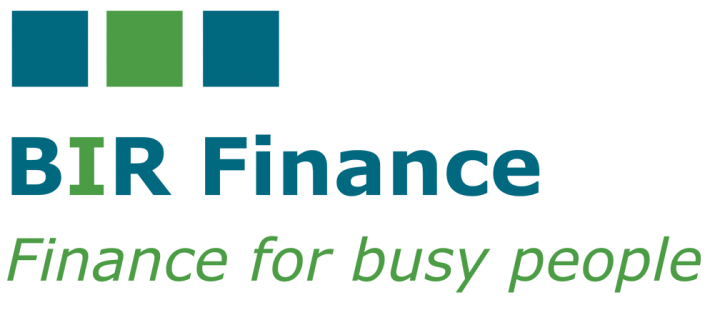Importance and ranking of Price, Quality and Service
As with most things we purchase, we are governed by the three aspects of Price, Quality and Service – or the PQS Matrix as we have called it.
As with most things we purchase, when you talk to people about borrowing money, their top of mind consideration is the price they are likely to be charged (which is commonly and as we shall discuss later erroneously confined to the quoted interest rate).
Yet, when you discuss further as to what sort of facility they need, the talk turns to things such as how much they can borrow against the security they can offer the lender and whether there are redraw facilities, early exit options and the ability to make extra payments. These optional extras’ are the quality aspects of the loan – and each loan is different (often very different) as to what you can borrow and what you can or cannot do during the term of the loan.
And lastly, when people talk about their experiences with banks and financiers, they raise issues such as ‘customer service’, ‘responsiveness’, ‘flexibility’, ‘reasonableness’ and ‘ease of use’ as being key considerations. These are the service components of the loan.
From the PQS Matrix, which is most important? Price, Quality or Service considerations?
The answer may surprise you. From discussions with many business owners, service is usually the main reason people use when they are considering changing lenders. The quality aspects of the loan or lending facility are often the main factor when choosing a particular loan and price comes in at number three. Price is almost taken as ‘the price I have to pay to get what I want’.
This prioritisation of Service, Quality and then Price will not surprise those of you who have been involved in market research.
Price is often raised as the ‘top of mind’ consideration but when it comes to an actual decision, it comes a long way down the list.
And, as with many items you purchase, the price of a loan is not just restricted to the ‘headline’ price (the interest rate) but there are other (and often unstated except in the fine print) price aspects which can have a significant impact on the total amount you end up paying to the bank. [One current example in the area of finance is the ‘monthly service charges’ being charged by the major retailers on interest-free credit purchases – these charges can amount to over 5% pa of the purchase price].
To further emphasise the importance of service for the decision-maker, when we ask a client whether they will consider swapping lenders and financiers, they often say ‘no’ because either they have a good relationship with their existing relationship manager or, because they fear that the new financier will be no different or no better than their existing one (i.e. ‘better the devil you know’).
PRICE CONSIDERATIONS
As noted earlier, price is not just about interest rates. As with the difficulties in quantifying the benefits of different service offerings, the other price issues such as upfront costs (e.g. bank charges and loan facility set up fees, legal fees and valuation fees), ongoing fees and charges and break costs are often difficult to compare, as they are not usually part of the sales discussion when you are seeking a new loan. To make matters worse, some of these charges and penalties can be quite significant.
When choosing financial products and facilities, it is important to address all these concerns, or work with someone who understands your needs today and tomorrow, and will ensure these needs are met.
To assess price considerations, you need to gather information on all the fees and charges (i.e. both those that are fixed charges and those that vary with your usage (e.g. per transaction). Most people do not have the time, patience or expertise to work this out for themselves, and rarely will a financier assist you to do this exercise in a meaningful way.
It is a good idea for you to work with someone who can calculate the total cost for you quickly and easily. Working with someone who can do this for you is important if the total price is going to be a consideration for you.
QUALITY CONSIDERATIONS
There are many quality considerations when looking at different loans and bank facilities. The most important is often the amount you can borrow against the assets you are prepared to put up as security.
The amount you can borrow is dependent upon a number of factors, the most important of which is the value of the asset(s) you are able to offer the lender as security against the money you are borrowing. In-home lending, the amount you can borrow is normally a relatively simple equation and is based upon the estimated value of the property. With a business loan, a lender will typically take into account the value and quality of working capital assets (debtors and stock) and fixed assets.
Other factors which may influence the amount you can borrow include the likely income and stability of that income over the future years, your past credit history (i.e. have you repaid past debts) and the level of existing debt you need to repay.
For businesses, future income and credit performance will be assessed based upon past financial performance as well as future profit and loss, balance sheet and cash flow projections.
In addition to the amount a lender will lend to you, the quality aspects of a loan will include aspects such as:
- The term of the loan.
- Does the loan need to be repaid on a regular basis (typically referred to as a Principal and Interest facility) or can be repaid all at once at some future date (an Interest Only facility)?
- Can the loan be repaid in variable lump sums during the course of the term of the loan with a consequential reduction in the level of interest required to be paid?
- If the loan is repaid early, can it be redrawn at a later date and if so, to what level?
- Can the loan be repaid early without penalty?
- Who is required to guarantee repayment of the loan if the borrower defaults?
When making an assessment of these considerations, it is important to ask about them when you first discuss it with your financier or financial advisor as they can get overlooked when setting up a facility and once a loan is in place, it is nearly impossible to vary its terms without starting all over again.
SERVICE CONSIDERATIONS
‘Front line’ banking service is often difficult to compare and it often depends upon who is working that day at the branch or on the phone.
However, the service you require which is associated with reviewing, updating and negotiating a new financial facility can be more easily determined. And it may surprise you to know that from time to time, some banks have developed a reputation for looking after their new customers better than their existing ones – seriously!
To make matters more complicated, the level of service for new versus existing customers can vary over time and it will often depend upon the marketing push coming from higher up within the bank. Not looking after existing customers as well as new customers can be an unintended or even intended consequence of decisions made from ‘up high’.
You would think that banks would follow the business mantra ‘it is cheaper to retain an existing customer than find a new one’ but often this seems to be ignored by front line banking staff – although we are not sure why!
When seeking a new loan, many people go directly to their existing bank as they have had a prior and often long term relationship with their banker. This can often be a good place to start.
However, as with most things in which you are not an expert, the saying ‘you don’t know what you don’t know’ is a relevant warning and consideration when talking to your existing financier. They will tend to tell you what they know and what they think you need to know. And at times, this can be very different from what you really need to know.
Unless you are able to take the time to shop around, compare and then question, little things may go unnoticed. These little things may become big things for you down the track. A good example is the break costs associated with most fixed interest rate facilities and some cashflow facilities. Or, it could be the provision of a redraw facility on a loan which has been paid down more quickly due to cash being available.
USING BROKERS VS GOING DIRECT TO LENDERS
Brokers can be a good resource to use when you want to find out more than what your current financier has to offer.
When you are using a broker, however, you need to make sure the broker is acting for you and not the lender and financier (most brokers get rewarded by the financier for placing business with them – and sometimes the rates of reward can vary considerably).
Brokers also vary greatly in experience and expertise.
Experienced brokers who understand your business are hard to find. Many finance brokers are experienced but in very limited areas. They may understand housing loans but not cashflow and business finance (ask your broker if they can prepare a 3 way forecast financial model – most cannot; yet it is necessary for most business finance packages to have an integrated forecast finance model of profit and loss, balance sheet and cash flow so the banker and their credit team can make an informed decision).
WHAT YOU NEED TO DO TO GET THE BEST FINANCE DEALS
You need to understand what a lender or financier requires of you when you are approaching them for finance. As with most things in life, planning allows you to remain in a position of control. And, planning requires a few things to be thought through before you start approaching a lender.
A lender is most concerned about risk. Yes, they would like your business and at times they appear very eager to get it, but that enthusiasm is always tempered by a backroom credit analyst (who you don’t get to see but who assesses your business risk before giving the green light to your finance application).
You can minimise the perception of risk by being prepared and having a well thought out business plan for the finance application. A well-prepared finance application will also open doors to financiers who might not otherwise be amenable to lending you money.
A well-prepared plan, particularly one which is clearly part of the business strategy process, will give lenders a lot more confidence than one which has been prepared solely for the purpose of raising some much-needed cash.
The trade-off for having a planning process is that a borrower may get better finance rates and/or they may get fewer restrictions on the security required (for example, a limitation on personal guarantees required). This will not only result in cheaper money but also may release some of the borrower’s or the guarantor’s assets for additional purposes outside of this finance application.
PREPARING YOUR FINANCE PLAN
In preparing your plan, whether it be for a home loan or a business loan, take into account the following key points which most financiers look for when they consider your finance application. Whilst this has been written from the perspective of a business, it is relatively easy to translate the business aspects into your personal situation.
Purpose: why do you need the money
Proposed Terms: how much money is being requested; what type of facilities are required (e.g. lines of credit, commercial loans, overdrafts, trade finance, letters of credit, lease finance, interest-only loans, principal and interest loans); the time period the money is required for; how and when the money is to be repaid; and, what security is being offered by the borrowers and guarantors to protect the financier from risk should the loan ever be in default.
Profile of the Borrower: what does the business do, what are its major products, who are its major customers and suppliers, and, have there been any changes since previous communication with the financier. This section may have to be reasonably detailed depending upon your previous relationship history with the financier and the purpose the finance is being requested. It may need to include a SWOT analysis (Strengths / Weaknesses / Opportunities / Threats) if the business is unfamiliar to the lender.
Ownership Structure: the ownership structure including trusts, subsidiaries etc. may be relevant to a financier who is lending to a legal entity which does not have direct control over all the business or assets used in the business.
Directors and Management: financiers are very interested in the executive and non-executive team and their track record, as they are the ones being charged with delivering on the business plan. Where directors and managers are also the owners (either directly or indirectly), the financiers like to obtain their commitment to the plan by seeking guarantees from those individuals who will share in the upside if the business is successful.
Financial support and verification: it is necessary to show what has happened in the business over the past few years as well as how the planned direction fits into and compares with the history of your business. Further, a financier will be looking to see how the projected future performance will enable repayment of the monies you are requesting. They will also be interested in confirming the future balance sheet position of the business to ensure the projections are realistic and that they continue to support your level of borrowings.
In conclusion, a well thought out plan, of which finance is just one component, will ensure that you get the best hearing possible from financiers. This opens the doors for you to utilise your business assets so they work harder for you.



